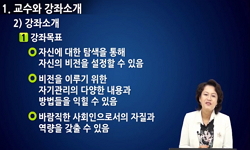이 연구의 목적은 스트릿 댄스 전공자의 2×2 성취목표성향과 자기관리가 무대불안에 미치는 영향을 규명하는데 있다. 연구목적을 달성하기 위해 연구대상은 2015년 현재 스트릿 댄스 전공을 ...
http://chineseinput.net/에서 pinyin(병음)방식으로 중국어를 변환할 수 있습니다.
변환된 중국어를 복사하여 사용하시면 됩니다.
- 中文 을 입력하시려면 zhongwen을 입력하시고 space를누르시면됩니다.
- 北京 을 입력하시려면 beijing을 입력하시고 space를 누르시면 됩니다.
스트릿 댄스 전공자의 2×2 성취목표성향과 자기관리가 무대불안에 미치는 영향 = Influence on Stage Anxiety Stemmed from 2×2 Achievement Goal Orientation and Self-management of a person Majoring in Steet Dance
한글로보기https://www.riss.kr/link?id=T13817743
- 저자
-
발행사항
서울 : 동국대학교, 2015
-
학위논문사항
학위논문(석사) -- 동국대학교 , 교과교육학과_무용교육전공 , 2015. 8
-
발행연도
2015
-
작성언어
한국어
-
주제어
2×2 성취목표성향 ; 자기관리 ; 무대불안
-
DDC
793.3
-
발행국(도시)
서울
-
형태사항
ⅴ, 107 p. ; 26 cm
-
일반주기명
지도교수: 손재현
- DOI식별코드
- 소장기관
-
0
상세조회 -
0
다운로드
부가정보
국문 초록 (Abstract)
표집방법은 서울시 소재 대학 스트릿 댄스 전공 재학생들을 중점으로
총 325부를 표집 하였고, 편중된 응답이나 부실하다고 판단되는 데이터를 제외하고
최종적으로 298부를 분석에 활용하였다.
조사도구는 자기평가기입법에 기초한 구조화된 설문지를 사용하였으며 설문지
구성은 배경변인으로 개인적 특성, 독립변인으로 성취목표성향, 매개변인은 자기관리, 그리고 종속변인으로 무대불안을 설정하였다.
이 연구의 목적을 달성하기 위하여 사용된 자료처리방법으로는 설문지의 응답내용이 부실하거나 신뢰성이 없다고 판단되는 설문지는 제외시킨 다음
분석이 가능한 자료를 컴퓨터에 입력하여 SPSS 18.0 프로그램을 이용하여
다음과 같은 방법으로 분석, 처리하였다.
조사대상자의 특성 분석과 설문문항을 설명하기 위해서 빈도분석, 확인적
요인분석을 실시하였다.
스트릿 댄스 전공자의 개인적 특성에 따른 성취목표성향과 자기관리, 그리고
무대불안의 차이를 알아보기 위해서 독립표본 T-test, 일원변량분석을 실시하였다.
이러한 스트릿 댄스 전공자의 성취목표성향과 자기관리가 무대불안에 미치는
영향을 알아보기 위해 다중회귀분석을 실시하였다. 이와 같은 연구방법 및 절차를
통하여 다음과 같은 결과를 도출하였다.
첫째, 조사대상자의 특성인 성별, 학년, 전공, 경력, 연습시간, 대회참여횟수는 2x2 성취목표성향에 부분적으로 영향을 미친다.
둘째, 조사대상자의 특성인 성별, 학년, 전공, 경력, 연습시간, 대회참여횟수는 자기관리에 부분적으로 영향을 미친다.
셋째, 조사대상자의 특성인 성별, 학년, 전공, 경력 , 연습시간, 대회참여횟수는 무대불안에 부분적으로 영향을 미친다.
넷째, 2×2 성취목표성향은 자기관리의 하위요인인 훈련관리, 대인관리, 정신관리, 몸 관리에 영향을 미치는 것으로 나타났다.
다섯째, 2×2 성취목표성향은 무대불안의 하위요인인 인지적 상태불안, 신체적 상태불안, 자신감에 영향을 미치는 것으로 나타났다.
여섯째, 자기관리는 무대불안의 하위요인인 인지적 상태불안, 신체적 상태불안, 자신감에 영향을 미치지 않는 것으로 나타났다.
결론을 정리해보면, 스트릿 댄스 전공자의 자기관리는 무대불안에 영향을 미치지 않지만, 성취목표성향은 자기관리와 무대불안에 유의한 영향을 미치는 변인임을 증명하고 있다. 이것은 스트릿 댄스 전공 학생들의 효과적인 무대불안을 위한 유용한 정보를 제공하는 것에 시사하고 있다.
이 연구의 목적은 스트릿 댄스 전공자의 2×2 성취목표성향과 자기관리가 무대불안에 미치는 영향을 규명하는데 있다. 연구목적을 달성하기 위해 연구대상은 2015년 현재 스트릿 댄스 전공을 하는 학생들을 대상으로 선정하였다.
표집방법은 서울시 소재 대학 스트릿 댄스 전공 재학생들을 중점으로
총 325부를 표집 하였고, 편중된 응답이나 부실하다고 판단되는 데이터를 제외하고
최종적으로 298부를 분석에 활용하였다.
조사도구는 자기평가기입법에 기초한 구조화된 설문지를 사용하였으며 설문지
구성은 배경변인으로 개인적 특성, 독립변인으로 성취목표성향, 매개변인은 자기관리, 그리고 종속변인으로 무대불안을 설정하였다.
이 연구의 목적을 달성하기 위하여 사용된 자료처리방법으로는 설문지의 응답내용이 부실하거나 신뢰성이 없다고 판단되는 설문지는 제외시킨 다음
분석이 가능한 자료를 컴퓨터에 입력하여 SPSS 18.0 프로그램을 이용하여
다음과 같은 방법으로 분석, 처리하였다.
조사대상자의 특성 분석과 설문문항을 설명하기 위해서 빈도분석, 확인적
요인분석을 실시하였다.
스트릿 댄스 전공자의 개인적 특성에 따른 성취목표성향과 자기관리, 그리고
무대불안의 차이를 알아보기 위해서 독립표본 T-test, 일원변량분석을 실시하였다.
이러한 스트릿 댄스 전공자의 성취목표성향과 자기관리가 무대불안에 미치는
영향을 알아보기 위해 다중회귀분석을 실시하였다. 이와 같은 연구방법 및 절차를
통하여 다음과 같은 결과를 도출하였다.
첫째, 조사대상자의 특성인 성별, 학년, 전공, 경력, 연습시간, 대회참여횟수는 2x2 성취목표성향에 부분적으로 영향을 미친다.
둘째, 조사대상자의 특성인 성별, 학년, 전공, 경력, 연습시간, 대회참여횟수는 자기관리에 부분적으로 영향을 미친다.
셋째, 조사대상자의 특성인 성별, 학년, 전공, 경력 , 연습시간, 대회참여횟수는 무대불안에 부분적으로 영향을 미친다.
넷째, 2×2 성취목표성향은 자기관리의 하위요인인 훈련관리, 대인관리, 정신관리, 몸 관리에 영향을 미치는 것으로 나타났다.
다섯째, 2×2 성취목표성향은 무대불안의 하위요인인 인지적 상태불안, 신체적 상태불안, 자신감에 영향을 미치는 것으로 나타났다.
여섯째, 자기관리는 무대불안의 하위요인인 인지적 상태불안, 신체적 상태불안, 자신감에 영향을 미치지 않는 것으로 나타났다.
결론을 정리해보면, 스트릿 댄스 전공자의 자기관리는 무대불안에 영향을 미치지 않지만, 성취목표성향은 자기관리와 무대불안에 유의한 영향을 미치는 변인임을 증명하고 있다. 이것은 스트릿 댄스 전공 학생들의 효과적인 무대불안을 위한 유용한 정보를 제공하는 것에 시사하고 있다.
다국어 초록 (Multilingual Abstract)
The responses were obtained by performing self-assessment and struchured surveys. Contents in these surveys were composed of individual characteristics that included background variables, achieving goal orientation as independent variables, self-management as medium variables, and stage anxiety as subordinated variables.
The credibility of the obtained data were analyzed and corrected by software(SPSS 18.0). In order to explain the questionnaires and analyze features of subjects(strdents), frequency analysis and confirmatory factor analysis were carried out initially. Then, statistical methods such as independent T-test, and the analysis of variance(ANOVA) were performed to investigate differences in achievement goal orientation, self-management, and stage anxiety according to individual characteristics of the subjects. Furthermore, multiple regression analysis were employed for understanding the influence of achievement goal orientation and self-management of an individual on his or her stage anxiety.
The statistical results obtained from this research suggested the following six outcomes.
First, selective and subtle differences in the investigated subjects' 2×2 achievement goal orientation were observed depending on one's characteristics such as sex, year, major, experience, practice time, and the number of competitions he or she entered.
Second, selective and subtle differences in the investigated subjects' self-management were observed depending on one's characteristics such as sex, year, major, experience, practice time, and the number of competitions he or she entered.
Third, selective and subtle differences in the investigated subjects' stage anxiety were observed depending on one's characteristics such as sex, year, major, experience, practice time, and the number of competitions he or she entered.
Fourth, 2×2 achievement goal orientation of an individual plays an important role in determining the degree of self-management in terms of mentality, health, relationship, and training.
Fifth, 2×2 achievement goal orientation can also act as a factor in building self-confidence and this influence his of her stage anxiety level.
Sixth, sub factors of self-management such as training, social relationships, mental and physical conditions selectively affect sub factors of stage anxiety such as self-confidence, cognitive instability, and physical instability; self-management as a whole does not directly his of her stage anxiety level.
In conclusion, theses collected statistical results con be applied beyond street dancers to provide useful information for choreographers attempting to treat stage anxiety.
Primary research goal was to investigate the influence on stage anxiety developed from achievement goal orientation and self-management of a person majoring in street dance. Current students majoring in street dance were selected as statistical popula...
Primary research goal was to investigate the influence on stage anxiety developed from achievement goal orientation and self-management of a person majoring in street dance. Current students majoring in street dance were selected as statistical population, and there were a total of a 325 students who participated in the study. After excluding possibly deviated responses and inaccurate data, 298 students experimental responses were analyzed.
The responses were obtained by performing self-assessment and struchured surveys. Contents in these surveys were composed of individual characteristics that included background variables, achieving goal orientation as independent variables, self-management as medium variables, and stage anxiety as subordinated variables.
The credibility of the obtained data were analyzed and corrected by software(SPSS 18.0). In order to explain the questionnaires and analyze features of subjects(strdents), frequency analysis and confirmatory factor analysis were carried out initially. Then, statistical methods such as independent T-test, and the analysis of variance(ANOVA) were performed to investigate differences in achievement goal orientation, self-management, and stage anxiety according to individual characteristics of the subjects. Furthermore, multiple regression analysis were employed for understanding the influence of achievement goal orientation and self-management of an individual on his or her stage anxiety.
The statistical results obtained from this research suggested the following six outcomes.
First, selective and subtle differences in the investigated subjects' 2×2 achievement goal orientation were observed depending on one's characteristics such as sex, year, major, experience, practice time, and the number of competitions he or she entered.
Second, selective and subtle differences in the investigated subjects' self-management were observed depending on one's characteristics such as sex, year, major, experience, practice time, and the number of competitions he or she entered.
Third, selective and subtle differences in the investigated subjects' stage anxiety were observed depending on one's characteristics such as sex, year, major, experience, practice time, and the number of competitions he or she entered.
Fourth, 2×2 achievement goal orientation of an individual plays an important role in determining the degree of self-management in terms of mentality, health, relationship, and training.
Fifth, 2×2 achievement goal orientation can also act as a factor in building self-confidence and this influence his of her stage anxiety level.
Sixth, sub factors of self-management such as training, social relationships, mental and physical conditions selectively affect sub factors of stage anxiety such as self-confidence, cognitive instability, and physical instability; self-management as a whole does not directly his of her stage anxiety level.
In conclusion, theses collected statistical results con be applied beyond street dancers to provide useful information for choreographers attempting to treat stage anxiety.
목차 (Table of Contents)
- Ⅰ. 서 론 1
- 1. 연구의 필요성 1
- 2. 연구의 목적 3
- 3. 연구변인 및 가설 4
- 4. 연구의 제한점 5
- Ⅰ. 서 론 1
- 1. 연구의 필요성 1
- 2. 연구의 목적 3
- 3. 연구변인 및 가설 4
- 4. 연구의 제한점 5
- 5. 용어의 정의 6
- Ⅱ. 이론적 배경 8
- 1. 스트릿 댄스 8
- 2. 2×2 성취목표성향 22
- 3. 자기관리 24
- 4. 무대불안 26
- Ⅲ. 연구방법 28
- 1. 연구대상 28
- 2. 연구기간 30
- 3. 조사도구 31
- 4. 조사절차 37
- 5. 자료처리 방법 38
- IV. 연구결과 39
- 1. 기술통계 및 상관관계 39
- 2. 조사대상자의 특성에 따른 2×2 성취목표성향, 자기관리, 그리고 무대불안의 차이 43
- 3. 2×2 성취목표성향과 자기관리의 다중회귀분석 결과 57
- 4. 2×2 성취목표성향과 무대불안의 다중회귀분석 결과 66
- 5. 자기관리와 무대불안의 다중회귀분석 결과 74
- V. 논 의 81
- 1. 조사대상자의 특성에 따른 2x2 성취목표성향의 차이 81
- 2. 조사대상자의 특성에 따른 자기관리의 차이 82
- 3. 조사대상자의 특성에 따른 무대불안의 차이 83
- 4. 2×2 성취목표성향이 자기관리에 미치는 영향 85
- 5. 2×2 성취목표성향이 무대불안에 미치는 영향 86
- 6. 자기관리가 무대불안에 미치는 영향 87
- Ⅵ. 결 론 88
- 참고문헌 90
- Abstract 100
- 부 록 103












